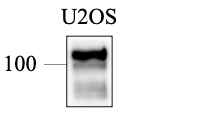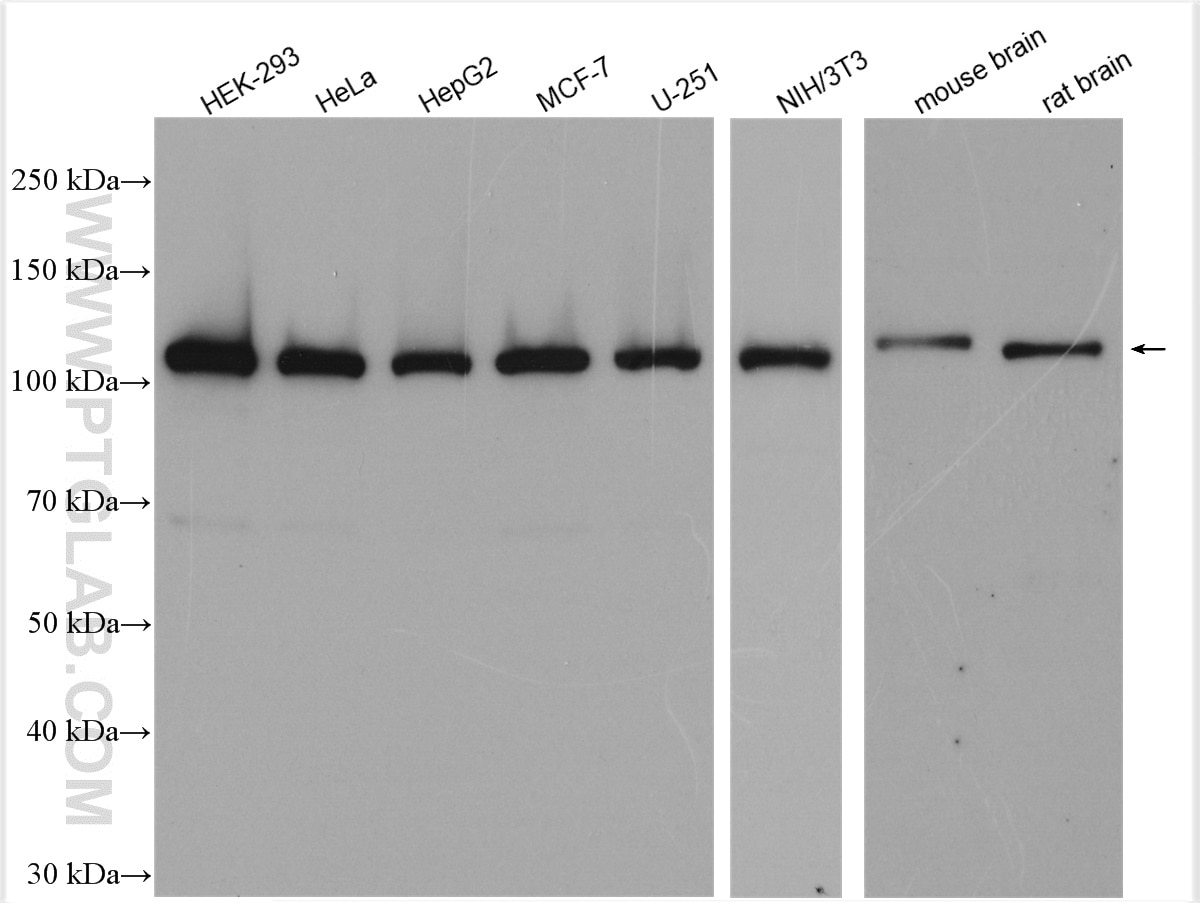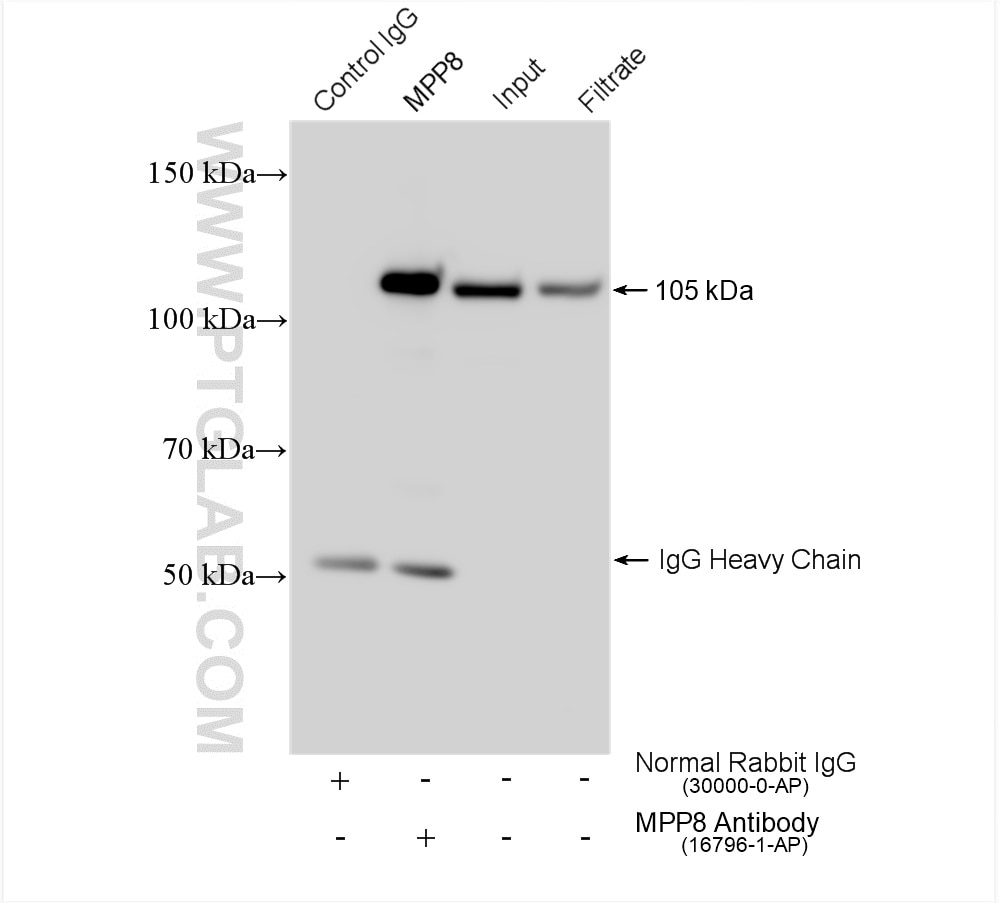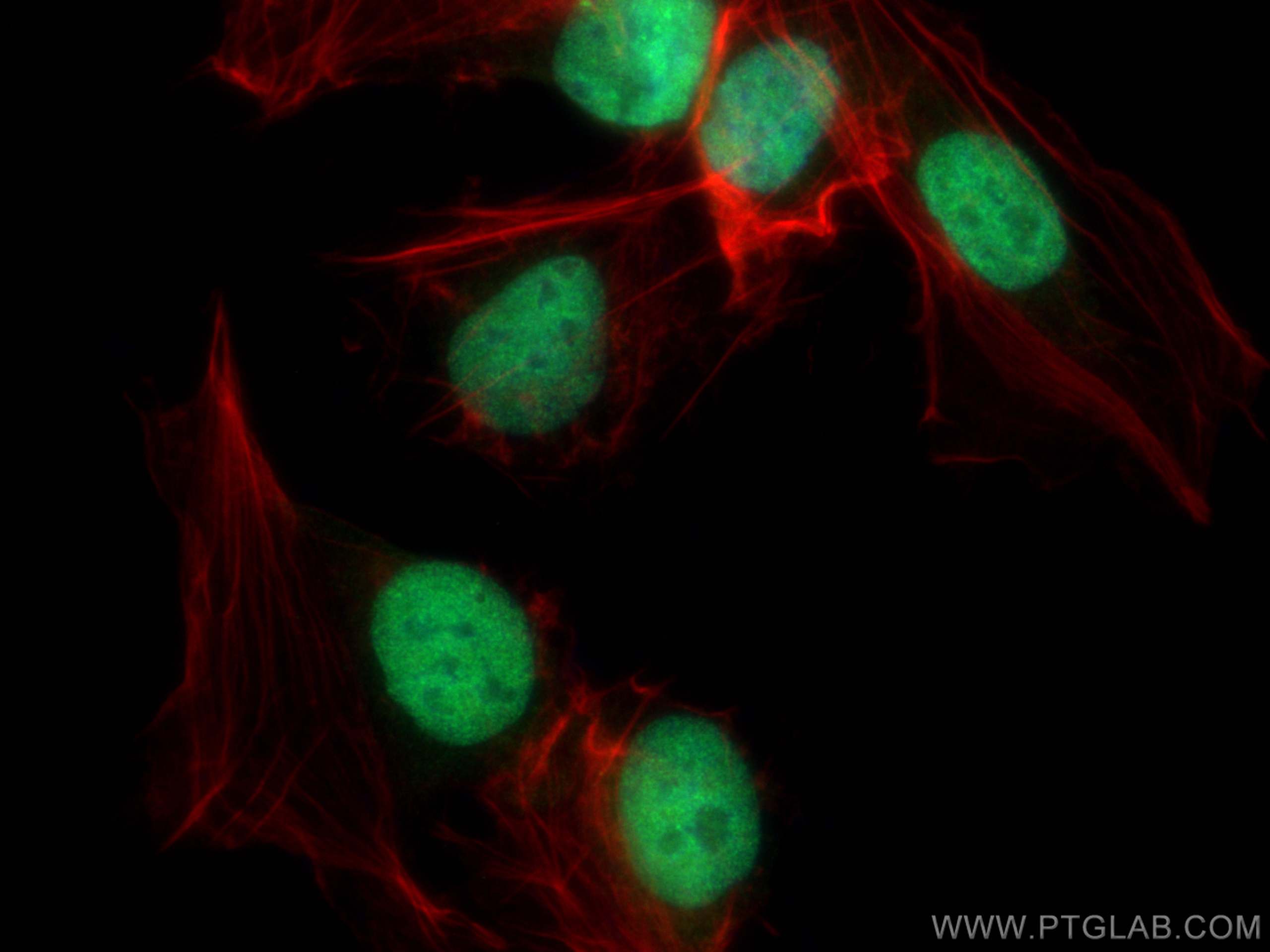- Phare
- Validé par KD/KO
Anticorps Polyclonal de lapin anti-MPP8
MPP8 Polyclonal Antibody for WB, IF/ICC, IP, ELISA
Hôte / Isotype
Lapin / IgG
Réactivité testée
Humain, rat, souris
Applications
WB, IHC, IF/ICC, IP, CoIP, ChIP, ELISA
Conjugaison
Non conjugué
N° de cat : 16796-1-AP
Synonymes
Galerie de données de validation
Applications testées
| Résultats positifs en WB | cellules HEK-293, cellules HeLa, cellules HepG2, cellules MCF-7, cellules NIH/3T3, cellules U-251, tissu cérébral de rat, tissu cérébral de souris |
| Résultats positifs en IP | cellules HEK-293, |
| Résultats positifs en IF/ICC | cellules U2OS, |
Dilution recommandée
| Application | Dilution |
|---|---|
| Western Blot (WB) | WB : 1:5000-1:50000 |
| Immunoprécipitation (IP) | IP : 0.5-4.0 ug for 1.0-3.0 mg of total protein lysate |
| Immunofluorescence (IF)/ICC | IF/ICC : 1:50-1:500 |
| It is recommended that this reagent should be titrated in each testing system to obtain optimal results. | |
| Sample-dependent, check data in validation data gallery | |
Applications publiées
| KD/KO | See 6 publications below |
| WB | See 22 publications below |
| IHC | See 1 publications below |
| IF | See 2 publications below |
| IP | See 4 publications below |
| CoIP | See 2 publications below |
| ChIP | See 4 publications below |
Informations sur le produit
16796-1-AP cible MPP8 dans les applications de WB, IHC, IF/ICC, IP, CoIP, ChIP, ELISA et montre une réactivité avec des échantillons Humain, rat, souris
| Réactivité | Humain, rat, souris |
| Réactivité citée | Humain, souris |
| Hôte / Isotype | Lapin / IgG |
| Clonalité | Polyclonal |
| Type | Anticorps |
| Immunogène | MPP8 Protéine recombinante Ag10268 |
| Nom complet | M-phase phosphoprotein 8 |
| Masse moléculaire calculée | 860 aa, 97 kDa |
| Poids moléculaire observé | 97-105 kDa |
| Numéro d’acquisition GenBank | BC003542 |
| Symbole du gène | MPP8 |
| Identification du gène (NCBI) | 54737 |
| Conjugaison | Non conjugué |
| Forme | Liquide |
| Méthode de purification | Purification par affinité contre l'antigène |
| Tampon de stockage | PBS with 0.02% sodium azide and 50% glycerol |
| Conditions de stockage | Stocker à -20°C. Stable pendant un an après l'expédition. L'aliquotage n'est pas nécessaire pour le stockage à -20oC Les 20ul contiennent 0,1% de BSA. |
Informations générales
The M-phase phosphoprotein 8 (MPP8) was firstly identified to coimmunoprecipitate with the RanBPM-comprised large protein complex [PMID:19956676]. It also binds to methylated H3K9 and recruited the H3K9 methyltransferases GLP and ESET, as well as DNA methyltransferase 3A (DNMT3A) to the promoter of the E-cadherin gene, a key regulator of tumor cell growth and epithelial-to-mesenchymal transition (EMT) [PMID:18726070]. This binding event of MPP8-H3K9me modulates the expression of E-cadherin, a key regulator of cell-cell adhesion with implications in embryonic development, tissue morphogenesis and homeostasis , together with H3K9 methyltransferases GLP and ESET and DNA methyltransferase 3a (Dnmt3a) [PMID: 18726070].
Protocole
| Product Specific Protocols | |
|---|---|
| WB protocol for MPP8 antibody 16796-1-AP | Download protocol |
| IF protocol for MPP8 antibody 16796-1-AP | Download protocol |
| IP protocol for MPP8 antibody 16796-1-AP | Download protocol |
| Standard Protocols | |
|---|---|
| Click here to view our Standard Protocols |
Publications
| Species | Application | Title |
|---|---|---|
Science GENE SILENCING. Epigenetic silencing by the HUSH complex mediates position-effect variegation in human cells.
| ||
Nat Genet Hyperactivation of HUSH complex function by Charcot-Marie-Tooth disease mutation in MORC2. | ||
Nat Genet Silencing of LINE-1 retrotransposons is a selective dependency of myeloid leukemia. | ||
Nat Cell Biol Distinct H3K9me3 heterochromatin maintenance dynamics govern different gene programmes and repeats in pluripotent cells | ||
Mol Cell Chromatin modifier HUSH co-operates with RNA decay factor NEXT to restrict transposable element expression. |
Avis
The reviews below have been submitted by verified Proteintech customers who received an incentive for providing their feedback.
FH Tsimafei (Verified Customer) (09-22-2025) | Excellent antibody!
 |
FH Julia (Verified Customer) (08-04-2025) | Good antibody! works great for mESC
 |
FH Roy (Verified Customer) (06-12-2024) | Great antibody to IP MPP8, working well on WB as well (1/1000, 1h at RT) in HeLa cells and Jurkat cells.
|




